Brand New Tire Losing Air Pressure – Causes And Solution
I know how it feels when you expect your new tires to perform reliably after investing your hard earned money in a new set of tires, only to discover that they’re losing air pressure. A few preventive measures will guide you to eliminate brand new tire losing air pressure.
There are multiple methods to prevent brand new tire losing air pressure, such as checking the PSI level, beads, rubber quality, leaky valves, and defective tires. One of the crucial preventions could also be replacing the bad valve stem. If the valve core is overly tight, air leaks may develop.
In this article, I will provide valuable insights and actionable tips on preventing and addressing the issue of brand new tire losing air pressure.
How Frequently Should The Air Pressure In My Brand New Tires Be Checked?
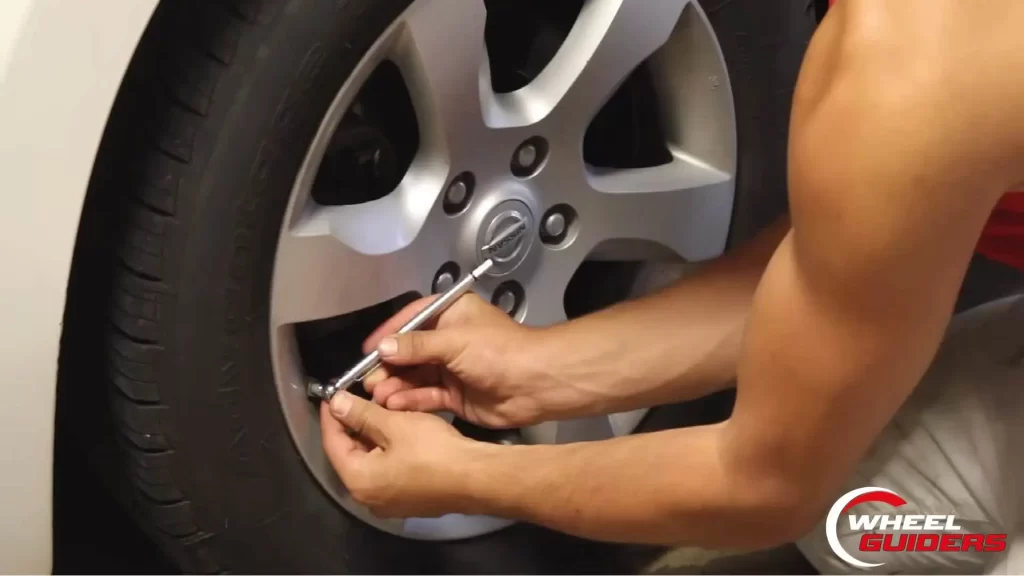
You should check your tire’s air pressure at least once a month, especially before long drives or during temperature changes, to have a safe and comfortable journey. Low tire pressure affects your vehicle’s handling, fuel economy, safety, etc.
Check the owner’s manual or your car’s door jamb for the recommended tire pressure. By following the manufacturer’s guidelines properly, one can avoid overinflation and there brand new tire losing air pressure easily.
Is The Air Pressure Loss In Brand New Tires During The First Few Weeks Typical?
Brand new tire losing air pressure is an uncommon occurrence. Although it is undeniable that new tires will lose air over time, so it’s crucial to regularly check your tire pressure and keep them inflated to the suggested psi. While driving, a small amount of air pressure is typical. However, the seal might malfunction if the air escapes much more quickly than anticipated.
What Is The Usual Pressure Loss For Brand New Tires?
New tires lose air pressure at a rate of 1 3 PSI per month when embedded, which is typical for brand new tires. Due to the air molecules interaction and taking up less space inside the tire, it is customary for brand new tires to experience a pressure loss of 1 PSI for every t 10 °F decrease in temperature.
What Are The Common Reasons Behind Brand New Tire Losing Air Pressure?
There are several common reasons behind brand new tire losing air pressure. These are the most prominent ones –
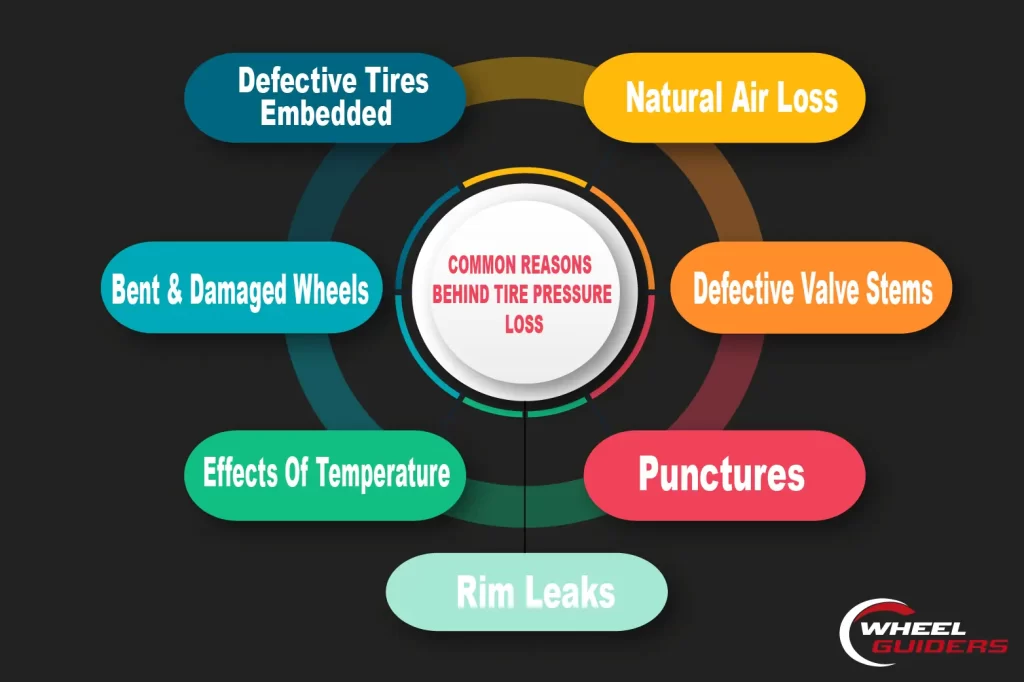
Natural air loss
All tires will inevitably lose air over time due to the rubber’s permeability and minute perforation. Fresh tires are no expectation, and during the first few weeks of usage, they often lose a modest amount of air.
Defective valve stems
These little rubber or metal tubes protrude from the tire sidewalls and allow air to be pushed into or released. To avoid air leaks from the tire, you must ensure that the valve system is not damaged and is positioned properly.
Punctures
Punctures are one of the most common reasons behind tire air pressure loss, even in new tires. Whether due to rough roads, debris, sharp objects on the roadside, or even manufacturing flaws, punctures can happen unexpectedly. Once a tire is punctured, air can leak out quickly, leading to underinflation and potential safety hazards on the road.
Rim leaks
Sometimes, there is a problem with the tire stems due to the mounting rim rather than the tire itself. The tire can lose air if the rim is rusted, broken, or improperly mounted.
Effects of temperature
Temperature changes impact tire air pressure. The air inside the tire may compress when the temperature lowers, decreasing tire pressure. Conversely, as the temperature rises, the air inside the tire expands, increasing tire pressure. These fluctuations can affect vehicle performance and fuel efficiency.
Bent Or Wheel Damage
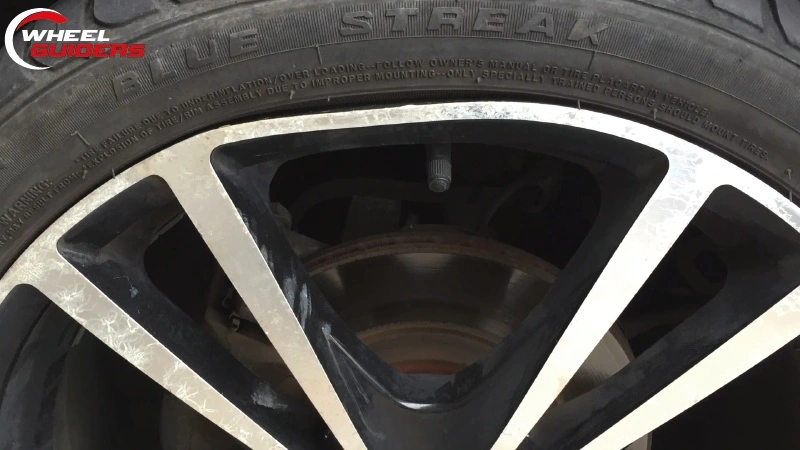
Potholes are notorious for warping, bending, and cracking wheels. The new tires will lose air if the technician puts them on a deformed wheel. Any warping or other damage to wheels from hitting potholes may result in an incorrect airtight seal and leaking air.
Defective tires embedded
In 99.99% of situations, a bent wheel, a damaged valve stem, or a failed tire bead seal is to be blamed for a brand new tire losing air pressure. If none of these apply, it is possible that a nail punctured the tire shortly after mounting it. The warranty will, fortunately, cover that as well.
What Consequences Could Air Pressure Loss In Brand New Tires Have In The Long Run?
Here are some essential points related to this that you must be aware of:
- Reduced fuel efficiency: The tire’s rolling resistance is increased by low tire pressure. Vehicles may then require more gasoline, decreasing fuel efficiency and raising costs.
- Uneven tire wear: Insufficient tire pressure can result in irregular tire wear, early tire failure, and the need for replacing tires. Replacing worn tires is expensive and risky as they are more vulnerable to blowouts and other problems.
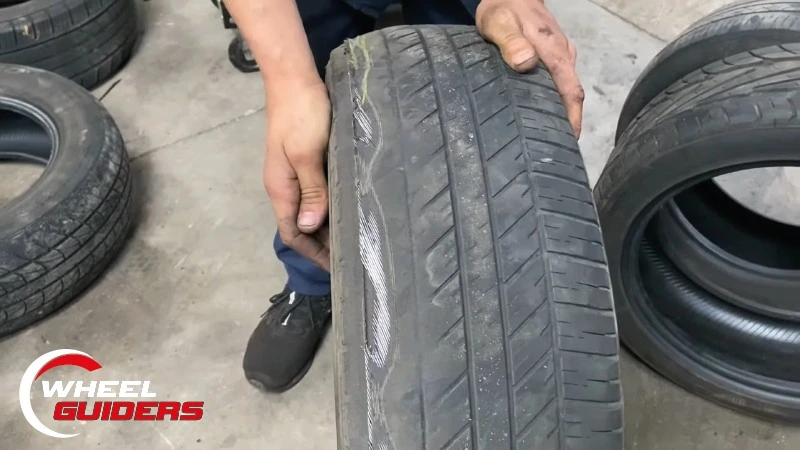
- Reduced handling and control: Gradual decrease of tire pressure can directly affect the vehicle and make it difficult to steer, brake, and accelerate, which increases the possibility of accidents and safety concerns.
- Risk of blowouts: Blowouts are a significant long term outcome of ignoring air pressure loss in new tires. Maintaining proper tire inflation can prevent dangerous blowouts caused by overheating and failure of an underinflated tire.
Can Improper Installation Or Improper Inflation Cause New Tire Air Pressure Loss?
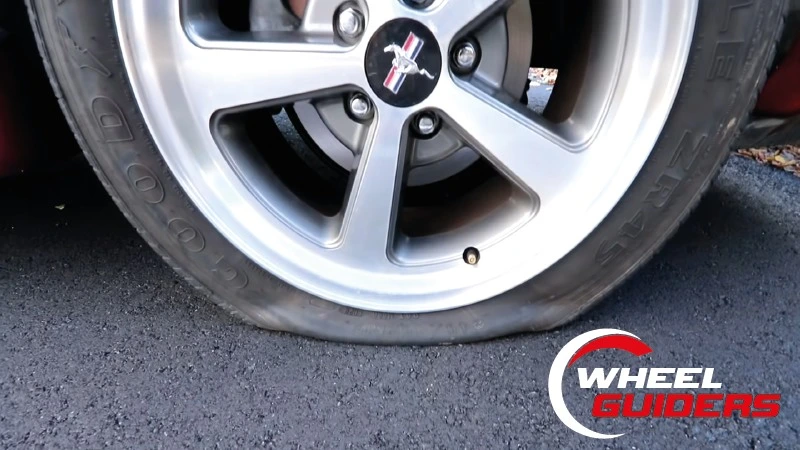
Absolutely! To ensure maximum performance, it is important to properly install and inflate a new tire, which can help maintain its air pressure. A new tire can lose air pressure when not installed or inflated. Improper installation can lead to a poor seal between the tire and wheel rim, which can cause air to leak out. It is essential to have the tires installed by a professional who ensures proper mounting and sealing.
Air pressure loss might also result from improper inflation. Particularly brand new tires lose air pressure due to underinflation, and the tire may flex excessively and produce heat, resulting in early tire degradation and decreased fuel economy.
Does The Type Of Vehicle Or Driving Conditions Affect New Tire Air Pressure?
Yes, the new tire pressure varies depending on the type of vehicle and how you drive. The manufacturers also recommend that the tire pressure varies based on the vehicle’s tire size and load carrying capacity.
Vehicle type
Manufacturers advise varying the tire pressure levels for different types of vehicles, depending on whether they are personal or transport vehicles. Reviewing your vehicle’s guidelines in the owner’s handbook or from the tire manufacturer is important for ensuring proper air pressure maintenance in your vehicle’s tire
Driving conditions
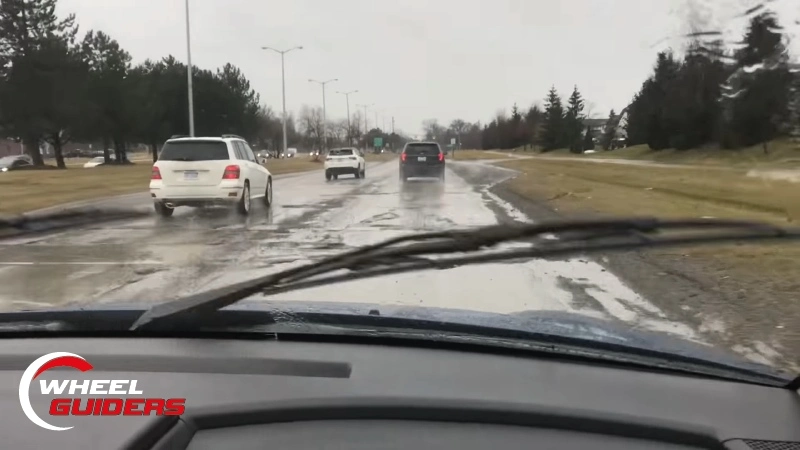
The suggested tire pressure may vary depending on the road conditions. If you drive on rocky or unpaved roads, you need to slightly increase the tire pressure, while for smoother rides such as highways or desert driving, the tire pressure needs to be dropped accordingly. You must check the exact pressure from the vehicle’s owner’s manual.
Load capacity
Your vehicle’s tire pressure should be increased when transporting a significant load to avoid strain and blowouts. It is also important to note that vehicles should not be loaded more than their capacity to ensure safety of the passengers and durability of the tires.
Temperature
It is essential to remember that air pressure might vary with temperature variations. Checking your tire pressure routinely and making effective changes can help you drive safely and effectively.
why is my tire pressure going down when i put air in it?
Your tire pressure may be going down after adding air due to a leaking valve stem, a puncture, or a damaged tire. It’s also possible that your pressure gauge or Tire Pressure Monitoring System is faulty.
To address the issue, visually inspect the tire for damage, check the valve stem for leaks, and consider seeking professional help if needed.
Alternate Solution To Brand New Tire Losing Air Pressure
It is advisable to have a spray bottle filled with soapy water. This simple tool can be quite handy in various situations. Not only will it help you detect punctures promptly during urgent moments and deserted areas, but it would also serve another valuable purpose.
By spraying the soapy water onto your tire’s surface and around the tire pressure sensor, you can identify potential issues. If you notice bubbles forming, it might indicate a problem with the tire pressure sensor or a tire leak.
This proactive approach can save you from unexpected troubles, especially in areas where accessing a tire shop quickly isn’t always feasible. Moreover when choosing between a tire patch and tire sealant, it is important to ensure a proper seal. An improper seal can lead to air leakage and further issues.
Can Excessive Weight Or Cargo Affect New Tire Air Pressure?
Maintaining the right air pressure in brand new tires can effectively help in managing a vehicle’s weight and cargo. The excessive weight of the cargo can stress the tires, resulting in increased tire compression and accelerated tire heating. When tires heat up, the air within them expands, which can cause overinflation.
An overinflated tire can wear unevenly on its treads and reduce lifespan, but to extend its lifespan, you need to keep them inflated. When driving long distances or carrying a heavy load, checking your tire pressure regularly is crucial. As your vehicle’s owner’s manual recommends, follow the recommended pressure levels and adjust them appropriately.
Can Temperature Changes Affect New Tire Air Pressure?
The pressure of the tires in your vehicle changes depending on the temperature. The gas inside the tires expands at high temperatures while it contracts when there is a drop in temperature. Exposure to direct heat from the sun or the heat generated by driving can change tire pressures frequently. As a result, tire experts recommend checking the tire pressure once every morning before you start the day.
This is where all season tires come into play. Manufacturers design them to adapt to temperature fluctuations, which makes them the best choice all year round.
Conclusion
By keeping these points in mind and adhering to them you can prevent your brand new tire losing air pressure. Just like with aged tires, taking care of new tires is essential for their longevity and low maintenance.
Incase of severe tire punctures or tire damage it is recommended to visit a tire expert. Many tire consumers tend to neglect their brand new tire losing air pressure they wear out, but it’s important to take proper care of them from the beginning.
To address the problem of a tire losing air, it is recommended to inspect the tire carefully for any visible punctures, cuts, or damage. If none are found, the next step is to check the tire valve and ensure it is properly sealed. Even slow leaks in tires can gradually cause a loss of air over time.
By giving new tires the right care and addressing minor issue promptly like slow tire leaks, bead damages and bad seal you can enjoy the significant benefit of less repairs and high performance.
Driving conditions are the culprit when it comes to premature wear and tear of the tire. Driving aggressively effects the tires and the vehicle’s shaft, suspension and breaks.
To achieve tire durability and good performance one should drive properly keeping the road conditions and climate in mind. The brand new tire losing air pressure could be due to numerous factors, including extreme temperatures.
